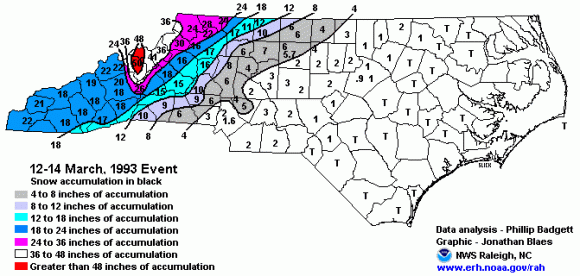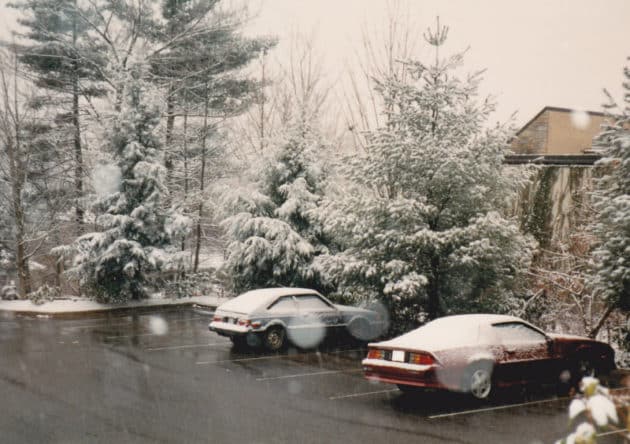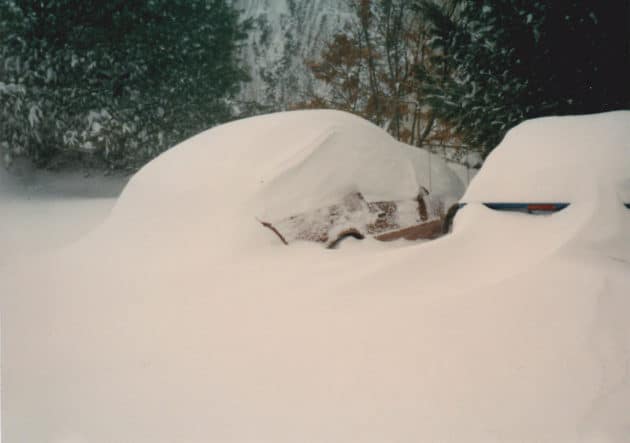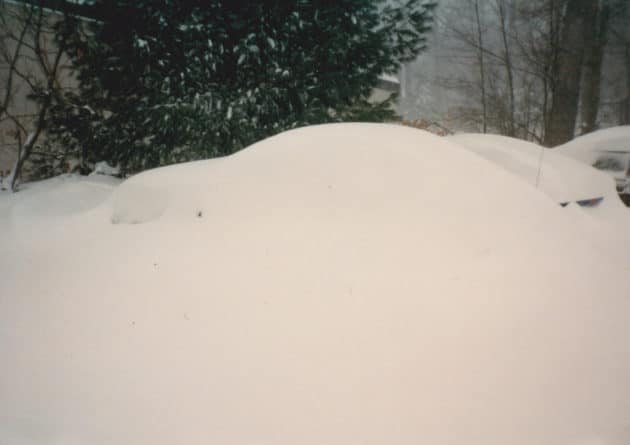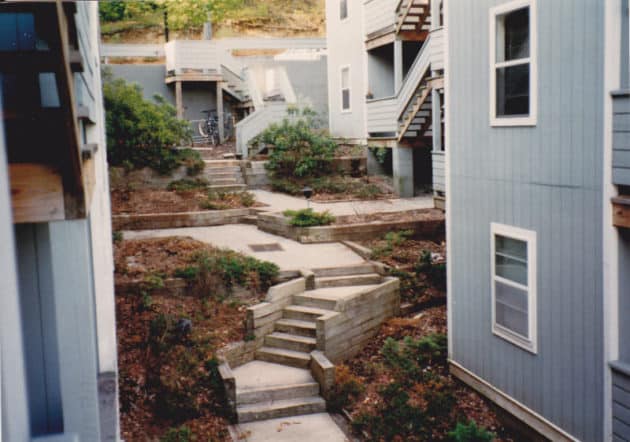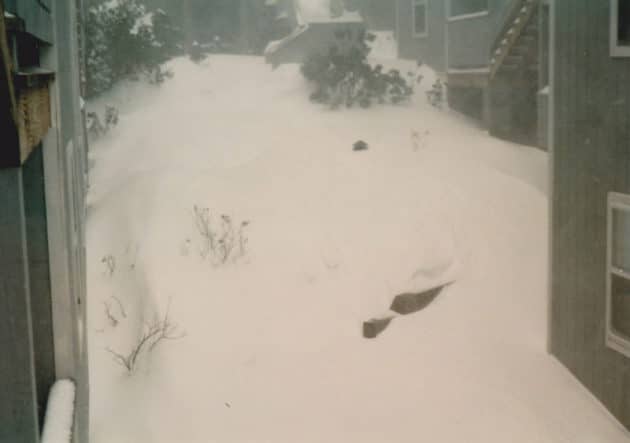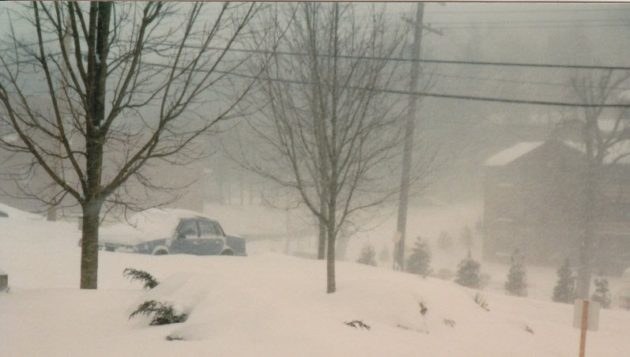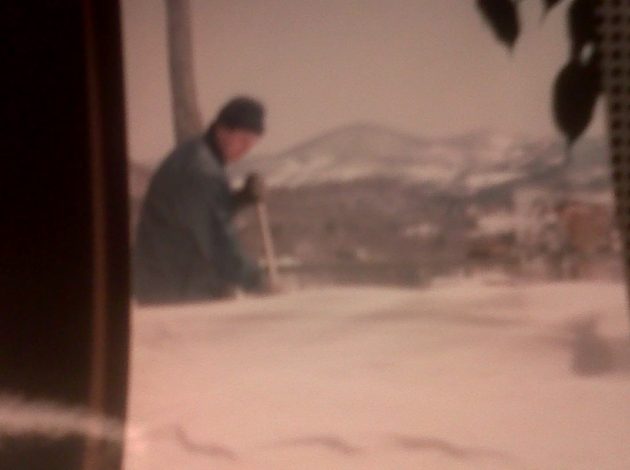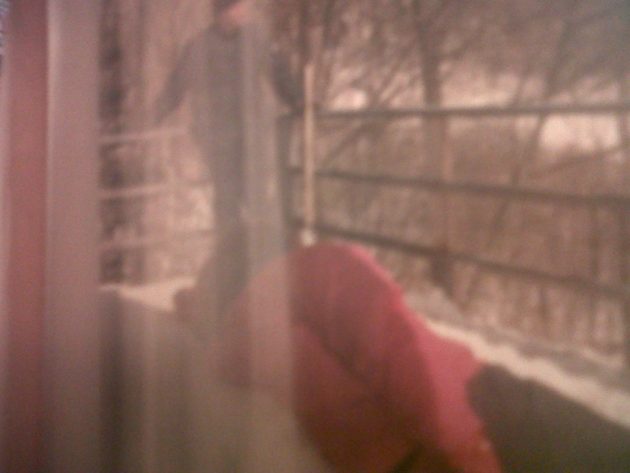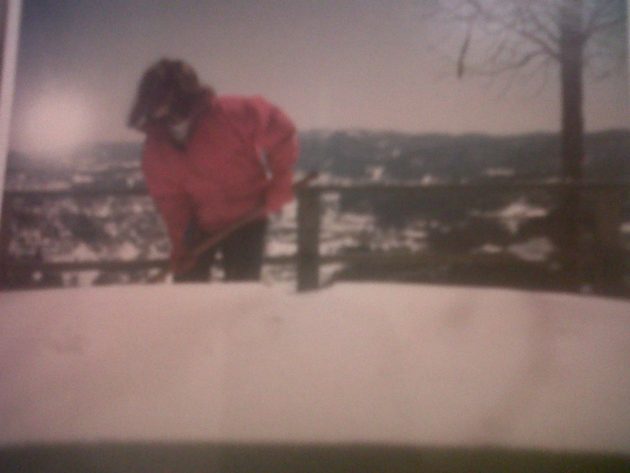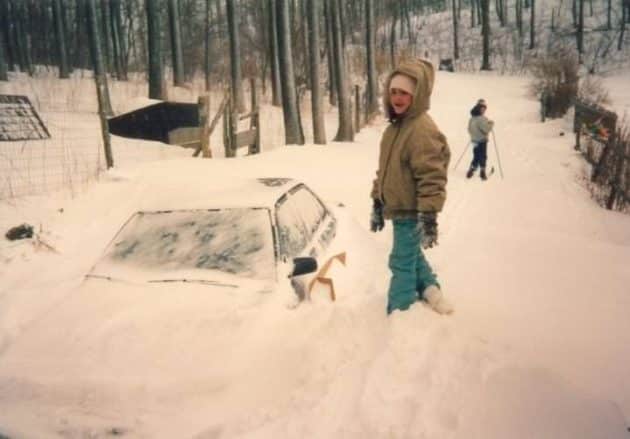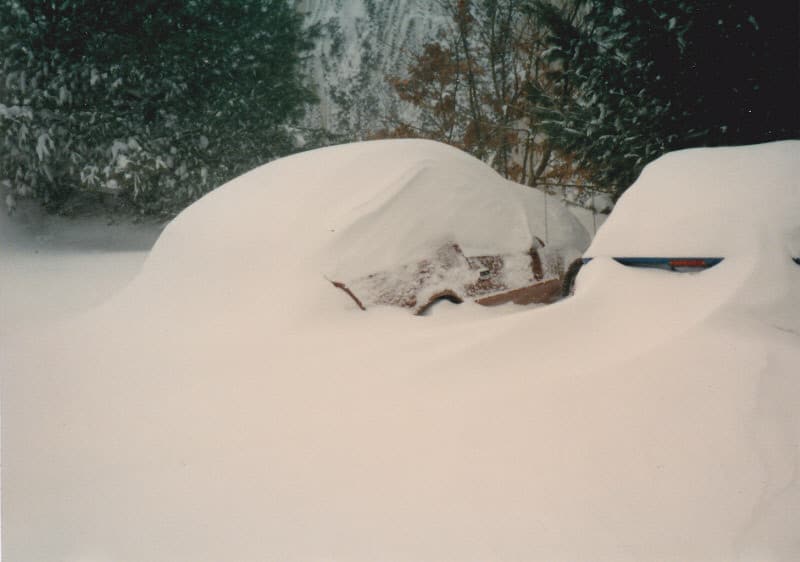
Last Updated on March 6, 2023 8:42 am
*Article originally published March 11, 2013.*
March 12-14 marks the anniversary of the “Storm of the Century,” the Blizzard of 1993. Anyone that was in the High Country during that time, or the East Coast for the matter, has a story to tell.
Snowfall totals ranged from 3 inches in Alabama to 54 inches in Snowshoe WV, with 33 inches reported in Boone.
Some of the notable items surrounding that storm:
Helicopters delivered food/medicine/supplies to those in the county that were buried by the snow, including feed to cattle.
Snow drifts of 8 to 21 feet were reported.
Most, if not all, of the area roads were blocked leaving motorists stranded. Snow equipment from area ski resorts were used in trying to rescue those stranded. Statewide, an estimated 300,000 homes were left without power, and over 160 thousand people were reported to be snowbound by the storm.
Wind chill values colder than minus 20 degrees were recorded in the mountains on March 13th & 14th, per the NC State Climate office.
Governor Jim Hunt declared 25 western counties and 15 eastern counties disaster areas. Watauga & Ashe counties suffered less than $500 thousand of property damage, according to a report by the State Climate Office.
*Received via twitter on Tuesday March 11, 2014*

Here's the recap from the State Climate Office:
“Commonly referred to as, ‘The Storm of the Century,' blizzard conditions prevailed in the western half of the state. Mountain winds reached 101 mph at Flattop Mountain, east of Asheville. Snow drifts of 8 to 21 feet were reported. At Asheville Airport, winds peaked from the northwest at 48 mph with gusts to 64 mph at 12 noon on the 13th.
The major impact to the western part of the state was from heavy snow accumulation resulting in extensive road blockages, stranded motorists, and in the mountains, lost hikers and campers. Strong winds and heavy snow brought down trees, limbs, and power lines leaving many without heat or electricity or telephone service. At one point, Polk County reported 99% of its electrical customers without power. Statewide an estimated 300,000 homes were left without power and over 160 thousand people were reported to be snowbound by the storm. Over 2700 traffic accidents were reported during the storm by State Highway Patrol, some resulting in fatalities.
The backlash of the storm brought extremely cold air into North Carolina late on the 13th and lasting through daybreak on the 15th. Wind chill values colder than minus 20 degrees were felt in western North Carolina on the 13th and 14th. Early on the 15th, the temperatures bottomed at record-setting levels for March, with 2 degrees at Asheville, 8 at Greensboro, and minus 4 at Waynesville.
Loss of home heating and the extreme cold resulted in seven deaths and one injury from exposure. All the victims were elderly, 70-years-old or older. Three of the dead were from Buncombe County, two from Madison County, and two from Clay County. A 93-year-old woman in Swain County survived injury from exposure. Elements of the storm contributed to the deaths of seven others with medical problems. These included snow-shoveling heart attack victims. Freezing temperatures caused water pipes to burst and resulted in the death of livestock. The heavy, wet snow caved in the roofs of several chicken houses, killing the chickens.
The Governor declared 25 western counties and 15 eastern counties disaster areas. The Red Cross reported that 55 homes were destroyed, and over 3300 others were damaged by the storm. The counties suffering the greatest amount of property damage to homes and businesses are listed as follows: Brunswick $6.6 million, Dare $4.7 million, Buncombe $ 1.5 million, and between 500 thousand and 1 million dollars in descending order, Transylvania, Columbus, New Hanover, Onslow, McDowell, Pender, Henderson, and Alexander Counties. Other counties named in the state declaration, but having less that $500 thousand of property damage included the following: in the east, Beaufort, Bladen, Carteret, Craven, Currituck, Duplin, Greene, Hyde, Sampson, and Wayne, and in the west, Alleghany, Ashe, Burke, Caldwell, Catawba, Cherokee, Graham, Guilford, Haywood, Iredell, Jackson, Macon, Madison, Mitchell, Polk, Stokes, Surry, Swain, Watauga, Wilkes, and Yadkin. It was also estimated that nearly $17 million in public assistance moneys would be needed to cover emergency services and clean up after the storm.”
YouTube videos by jleepixprod
Photos: Kathy Rayfield. All of these were taken in the Kingswood Condos parking lot. (since there was a 24 hour curfew for 2 days). I included a few before shots as well for reference. My car is the Camaro. It didn't move from that spot for 2 weeks. I took the parking lot shot just as it started snowing.
Photos: Kelly Baruth.
Blizzard 1993: Our deck at 177 Pinnacle Lane Boone, NC.
My mother took this picture from inside our house, through the 12 foot, floor to ceiling windows.
Blizzard 1993: Blurry, I know… My father trying to clear off the deck at 177 Pinnacle Lane Boone, NC.
My mother took this picture from inside our house, through the 12 foot, floor to ceiling windows.
Blizzard 1993: from our deck after 2+ hours of shoveling 1121
Blizzard 1993: Blurry, I know… My father enlisted me to “help” clear off the deck at 177 Pinnacle Lane Boone, NC.
My mother took this picture from inside our house, through the 12 foot, floor to ceiling windows.
Photo: Joe Quinn
Blizzard of '93, 19 years ago. Our kids and buried car on Doe Ridge above Howard's Creek.
Related Articles
NOAA report Remembering the Storm of the Century 20 Years Later







